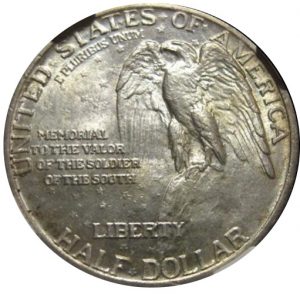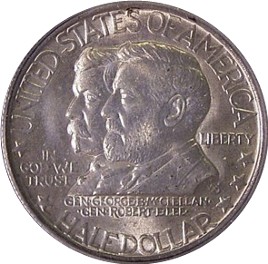Events this past week in Charlottesville, Virginia are forcing us to heed Santayana’s warning and look at our history to understand how we got here and why. Regardless of how anyone feels about the issues behind the divisions we cannot condone the use of violence to try to force opinions on others. This is what was tried in the past, which is why we have to learn from it because it seems to repeat itself time and again.
We should not hide our history behind political correctness. We need to put both the good and the bad out front for all to see. We need to learn from both and improve going forward. And this is not only about the Civil War. The United States has had a long record of abuses to the native tribes in the 19th century that we should be ashamed of. In fact, this country continues to abuse the native tribes and violate treaties that were designed to protect both sides. For an example, see the Dakota Pipeline project.
Americans want to celebrate their past and learn from the mistakes but are we continuing to make the same mistake? For every Civil Rights Act of 1964 Silver Dollar (2014), there are stories of the internment of Japanese-Americans during World War II whose only “crime” was to have Japanese ancestry.
Commemorative coins have always been used to help raise money for one cause or another. Members of Congress would bring the request to Washington from their home state and use the support of these bills to bargain with their fellow members to support other bills. It became so bad that the commemorative coins programs were ended following the 1954 release of the George Washington Carver Half Dollar.
During the early period of commemorative coins, Congress authorized the issuance of three commemoratives with themes tied to the Civil War. Two were created to memorialize battlefields and the other a memorial that is causing controversy today.
Stone Mountain Memorial Half Dollar
The 1925 Stone Mountain Memorial Half Dollar features the images of Generals Robert E. Lee and Stonewall Jackson. The monument was commissioned by the Stone Mountain Confederate Memorial Association to create a monument to the leaders of the south on the large granite face of the mountain. Both the coin and the monument was designed by Gutzon Borglum. Borglum was the same designer of Mount Rushmore.
The project began in 1916 by the United Daughters of the Confederacy. They were deeded the side of the mountain by the Venable Brothers, who used to mine the stones. Sam Venable used Stone Mountain as a central meeting place as part of the resurgence of the Ku Klux Klan.
The carved memorial was supposed to be a 12-year project. Aside from funding issues, Borglum, who was known to associate with the Ku Klux Klan, quit the project in 1925. That lead to having many problems with funding and maintaining sculptors throughout the years. After the mountain was purchased by the State of Georgia in 1958, there were two attempts to complete the memorial. It was finally completed in 1970.
Congress authorized a production of 5 million coins. These coins were struck in batches of 500,000 at a time in Philadelphia. The coins were sent to the Stone Mountain Confederate Memorial Association which offered them for sale. Despite brisk sales, they only sold about 1.3 million coins. The balance of the last run was returned to the U.S. Mint to be melted.
Battle of Gettysburg Half Dollar
The 1936 Battle of Gettysburg Half Dollar issued to commemorate the 75th anniversary of the Civil War’s bloodiest battle. The obverse features generic the profiles of Union and Confederate soldiers with the words “Blue and Gray Reunion” under the portraits.
During this time, the Gettysburg Battlefield Memorial Association had been transferred from the War Department to the National Park Service for administration. But the area needed additional infrastructure and support. As part of the plans to commemorate the 75th anniversary of the Battle of Gettysburg, the commemorative coin was used to Pennsylvania the necessary money. As with many of the commemorative coins issued during The Great Depression, the program fell short.
Congress authorized a production of 50,000 coins. These coins were struck at Philadelphia and sent to the Pennsylvania State Commission which offered them at $1.65 each. They sold just under 27,000 coins. The rest were returned to the U.S. Mint to be melted.
Battle of Antietam Half Dollar
The 1937 Battle of Antietam Half Dollar was issued to commemorate the 75th anniversary of the battle which General Geroge B. McClellan preventing the invasion of Maryland by General Robert E. Lee’s Army of the Potomac near Antietam Creek. Although Lee’s army was able to withdraw back to Virginia, President Abraham Lincoln relieve McClellan because it was felt that the battle did not defeat Lee’s army.
Similar to the Gettysburg Half Dollar, Maryland proposed a commemorative half dollar in order to improve the infrastructure around the battlefield and cemetery. One of the differences between Antietam and Gettysburg was the network of roads built around the battlefield area that Sharpsburg, the main city along Antietam Creek, was a gateway across the Potomac River into these western areas even before the Civil War. As a natural crossing point, Lee’s army was going to use it to attack the Union from the west.
Congress authorized a production of 50,000 coins. These coins were struck at Philadelphia and sent to the Washington County (Maryland) Historical Society which offered them at $1.65 each. They sold about 18,000 coins. The rest were returned to the U.S. Mint to be melted.
Learning from History
During the times that these commemorative coins were proposed, the commemoratives were met with little interest and even with some disdain that the U.S. Mint would be required to produce so many commemoratives.
Specifically, regarding the Stone Mountain Memorial half dollar, a review of newspaper archives does not mention an outrage over the production of the coin. However, there was plenty of stories about the Jim Crow laws. Predictably, northern newspapers were against them and southern newspapers defended them.
Stone Mountain itself has had an interesting history even after the passage of the Civil Rights Act. In the 1980s, Daniel Carver, former Grand Dragon of the “Invisible Empire, Knights of the Ku Klux Klan” donated money to the Stone Mountain Memorial Association to upgrade the park. In return, the organization was going to rename the park in his honor until protests convinced the organization otherwise. Carver would go on to make a spectacle at the park during the week before the 1988 Democratic National Convention that was held in Atlanta.
History is addressed to understand the context. It is easy to look back and ask, “What were they thinking?” By understanding the history, it does provide an insight into that answer.
But Continue to Collect History
History is a great teacher but it is not enough to have the words. We build museums with artifacts of history so that we can learn from the past. We collect artifacts of history so that we can preserve the past. We study these artifacts to understand “What were they thinking” because it is important to the context of history.
Whether it is for curiosity, pride, interest in the subject, or the thrill of the chase, collecting historical artifacts is not only educational but also vital to ensure we do not forget the history regardless of whether it is good or bad.
If your passion is classic commemoratives, make sure you include a Stone Mountain Memorial Half Dollar in your collection.
If your passion is Confederate currency, some were well made and will make for an interesting collection.
If your passion is military medals and awards of the Civil War or of the Confederacy, make sure you find as many as possible. Document what your find. Research their provenance. Understand what they mean because it is important that history is remembered.
Whatever you collect, share it with the rest of us because we all need to learn about history so that we do not repeat the mistakes of the past.








